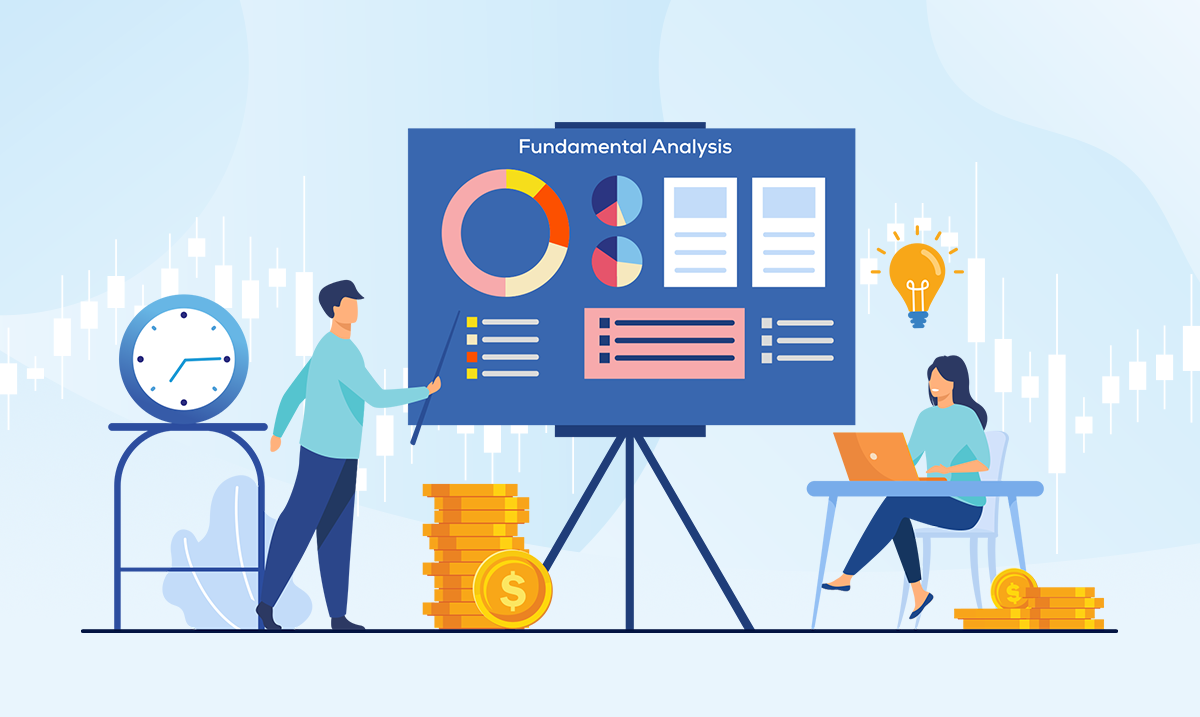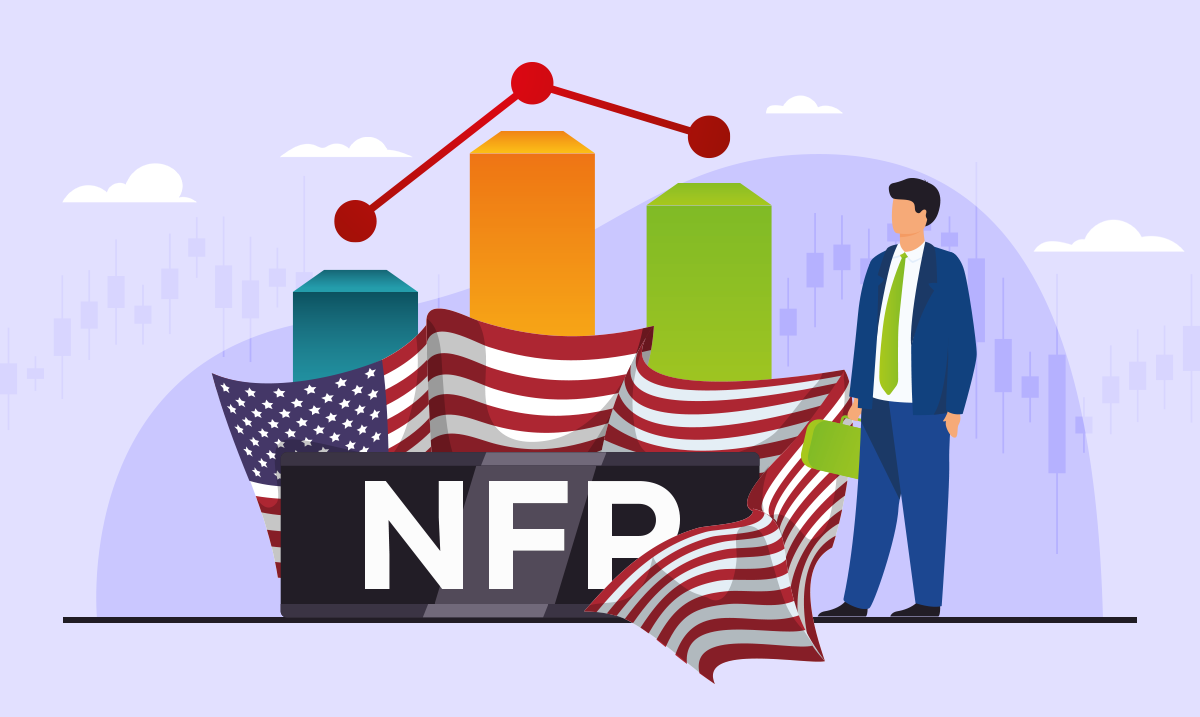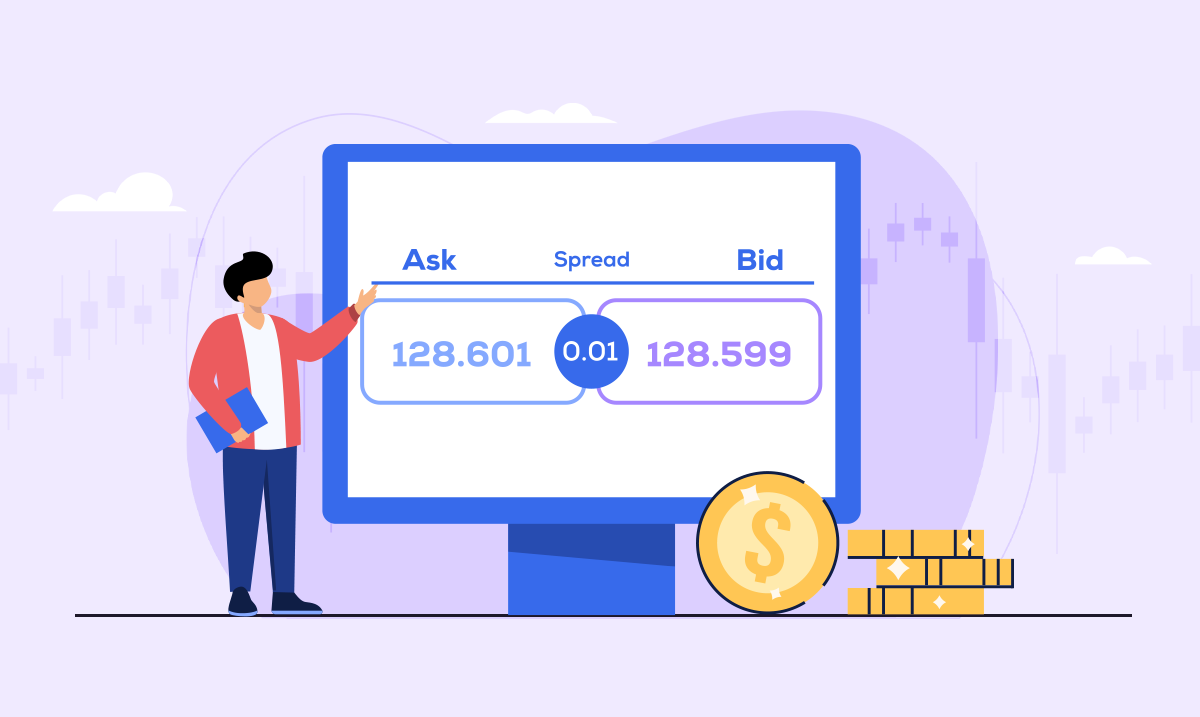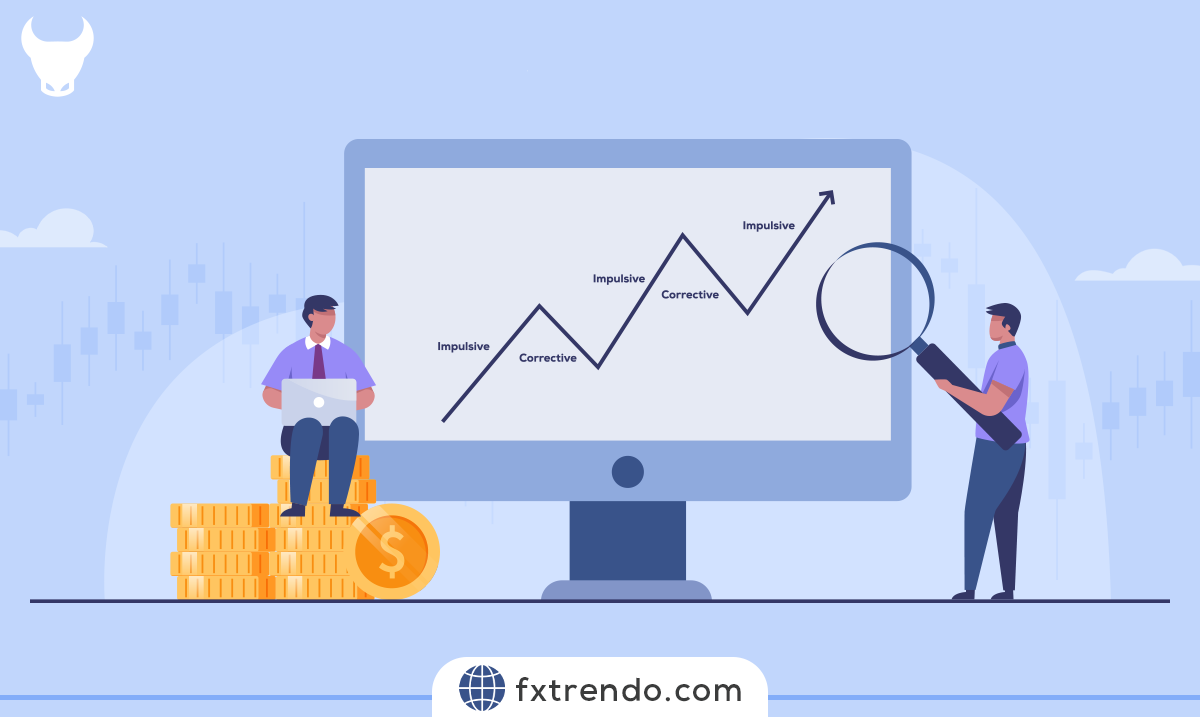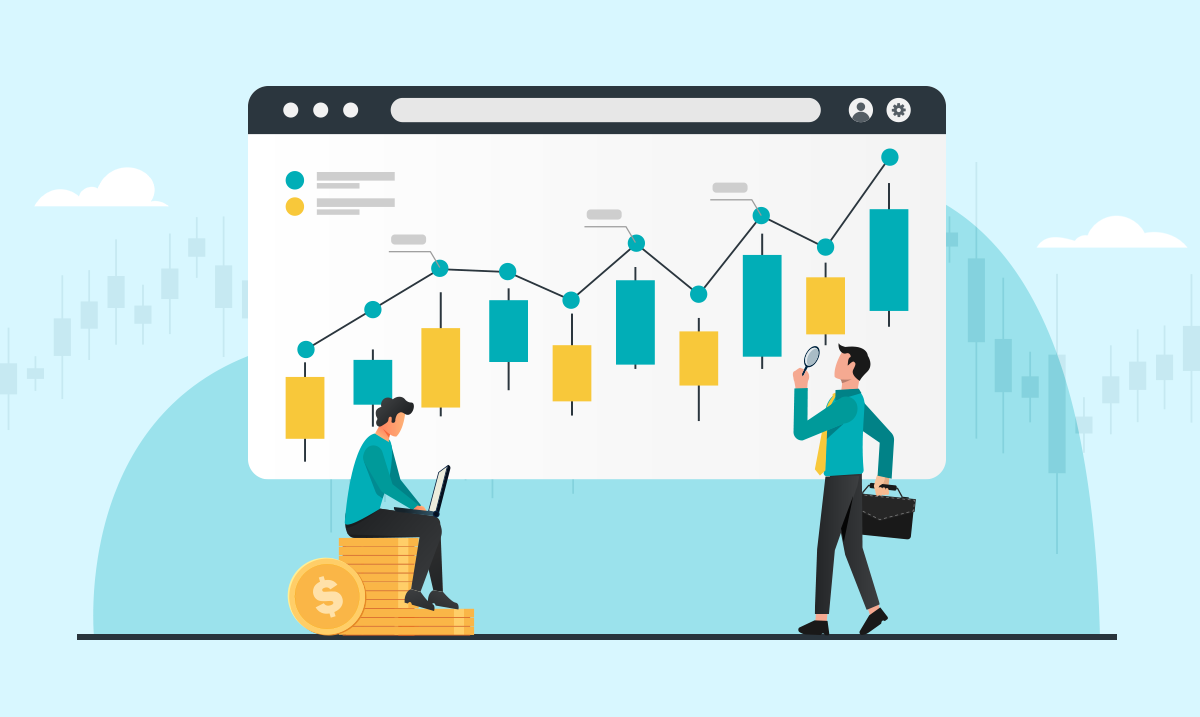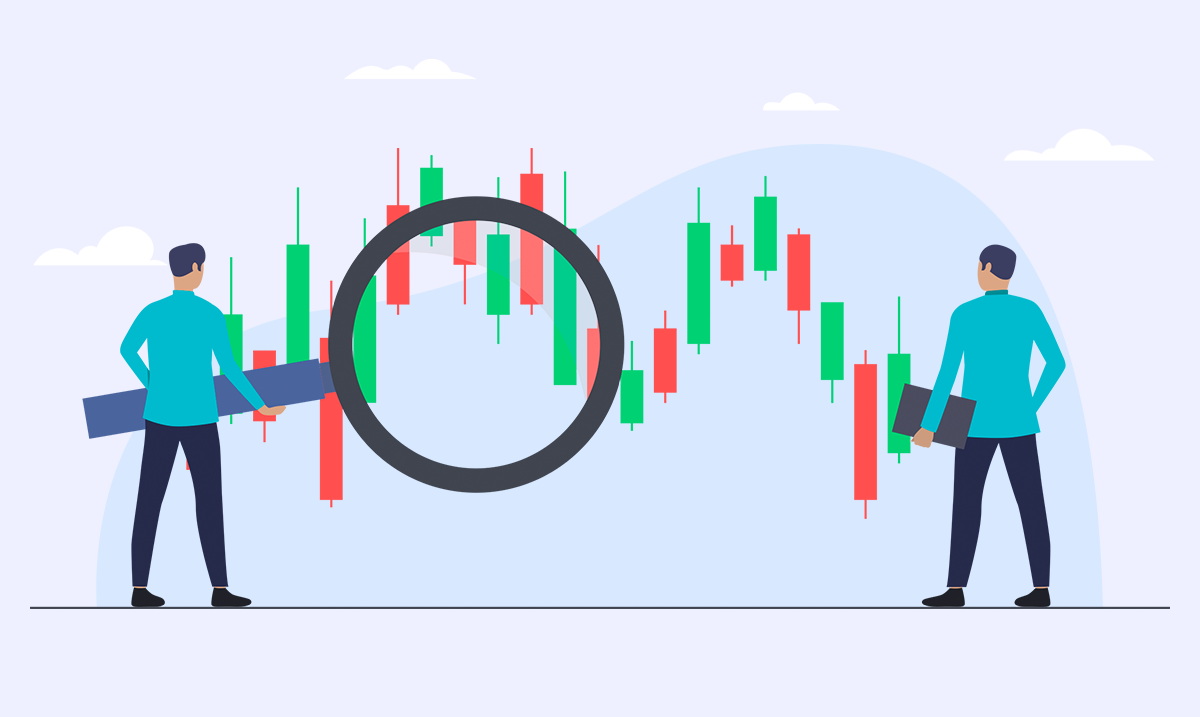What Are the Best Forex Currency Pairs to Trade in 2024 for Beginners? | Trendo Broker


Choosing the right currency pairs is the first step for beginners. The Forex market is vast, with many currency pairs. Some offer more liquidity, some have lower spreads, and others are influenced by specific economic factors. The right pair can lead to success.
In this blog, we’ll guide you through selecting the best Forex currency pairs to trade in 2024. We’ll discuss the characteristics of these pairs, why they’re suitable for beginners, and how to leverage them for profitability.
By the end of this blog, you’ll understand Forex trading and make informed trading decisions. Let’s start!
Contents
What Are Currency Pairs?
Currency pairs are the foundation of Forex trading. They represent the value of one currency against another. In a currency pair, the first currency is the base currency, and the second is the quote currency. For example, in the pair EUR/USD, the euro (EUR) is the base currency, and the US dollar (USD) is the quote currency.
When you trade a currency pair, you are buying one currency while selling the other. The exchange rate tells you how much of the quote currency is needed to buy one unit of the base currency. For instance, if the EUR/USD pair is quoted at 1.20, it means 1 euro is equal to 1.20 US dollars.
Major pairs are categorized into three types: major, minor, and exotic pairs.
Major pairs always include the US dollar and are the most traded, such as EUR/USD and USD/JPY.
Minor pairs do not include the US dollar but involve other major currencies like EUR/GBP.
Exotic pairs consist of one major currency and one from a smaller or emerging market, like USD/TRY (US dollar and Turkish lira).
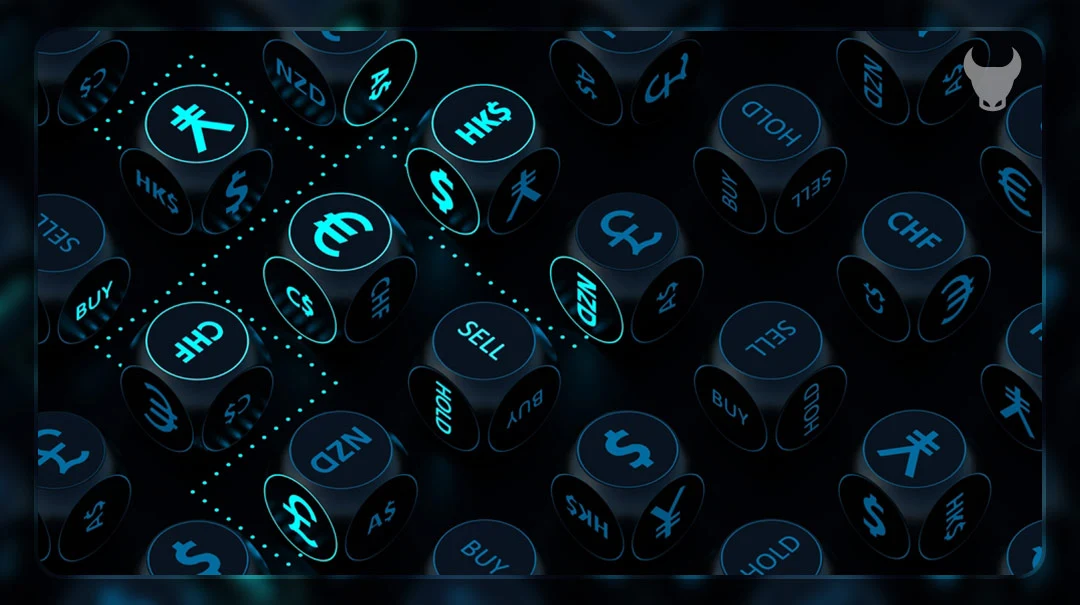

What are the main currency pairs?
Forex trading involves ‘main’ or ‘major’ currency pairs due to their high liquidity and trading volume. These pairs involve currencies of the world’s largest economies and are traded against the US dollar. Here are the major currency pairs:
1. EUR/USD (Euro/US Dollar): The most traded pair, representing two large economies. Known for high liquidity and low spreads.
2. USD/JPY (US Dollar/Japanese Yen): Influenced by the interest rate differential between the US and Japan. Popular due to its volatility.
3. GBP/USD (British Pound/US Dollar): Represents the economies of the United Kingdom and the United States. Known for high volatility.
4. USD/CHF (US Dollar/Swiss Franc): Used as a ‘safe haven’ during market volatility due to the stability of the Swiss Franc.
There are also ‘commodity currency pairs’ influenced by commodity prices:
1. AUD/USD (Australian Dollar/US Dollar): Affected by the price of gold and other mining commodities.
2. USD/CAD (US Dollar/Canadian Dollar): Influenced by the price of oil.
3. NZD/USD (New Zealand Dollar/US Dollar): Influenced by the price of dairy products and other agricultural commodities.
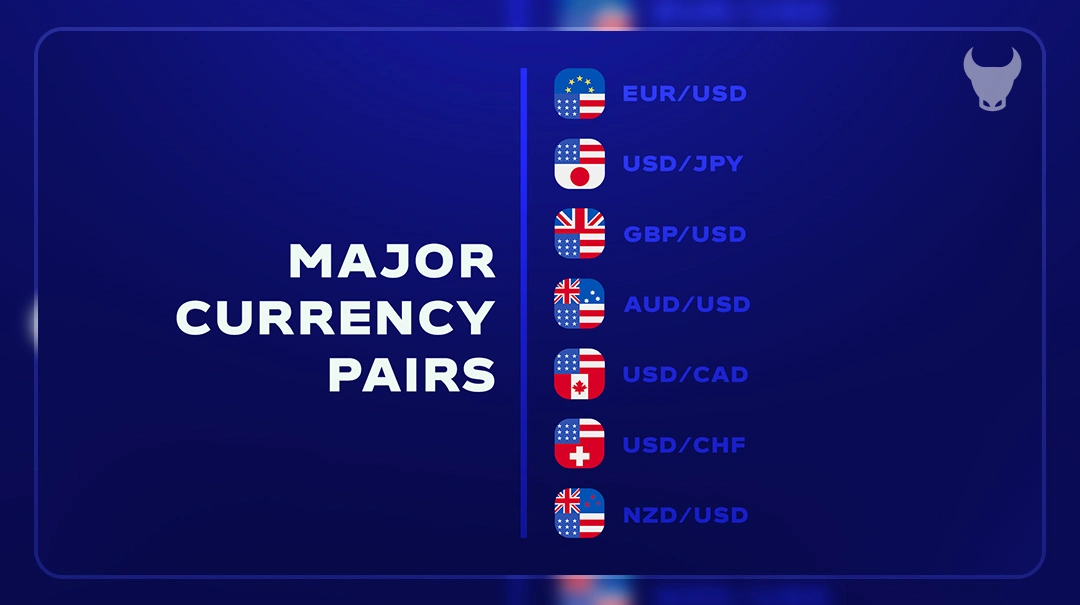

Factors to Consider When Choosing Currency Pairs
Choosing the right currency pairs is crucial for successful Forex trading. Here are key factors to consider:
1. Liquidity: Liquidity refers to how easily a currency pair can be bought or sold without affecting its price. Major currency pairs like EUR/USD and USD/JPY have high liquidity, making them easier to trade with minimal price changes.
2. Volatility: Volatility measures how much the price of a currency pair fluctuates. High volatility can mean more trading opportunities but also higher risk. Beginners might prefer pairs with moderate volatility to manage risk better.
3. Spread: The spread is the difference between the buying and selling price of a currency pair. Lower spreads mean lower trading costs. Major pairs usually have tighter spreads compared to exotic pairs.
4. Economic Stability: The economic stability of the countries involved in a currency pair can impact its performance. Pairs from stable economies are generally more predictable and less risky.
5. Trading Sessions: Different currency pairs are more active during specific trading sessions. For example, EUR/USD is most active during the European and US sessions. Aligning your trading with these sessions can provide better opportunities.
6. Correlation: Some currency pairs move in relation to each other. Understanding these correlations can help in managing risk and making informed trading decisions. For instance, EUR/USD and GBP/USD often move in the same direction.
7. Personal Trading Style: Your trading style and strategy should align with the characteristics of the currency pairs you choose. Day traders might prefer pairs with high volatility, while long-term traders might look for pairs with stable trends.
By considering these factors, you can select currency pairs that match your trading goals and risk tolerance, leading to more informed and effective trading decisions.
What Are the Best Currency Pairs to Trade for Beginners in 2024?
For beginners in Forex trading, selecting the right currency pairs is essential for a smooth start. Here are some of the best currency pairs to trade in 2024:
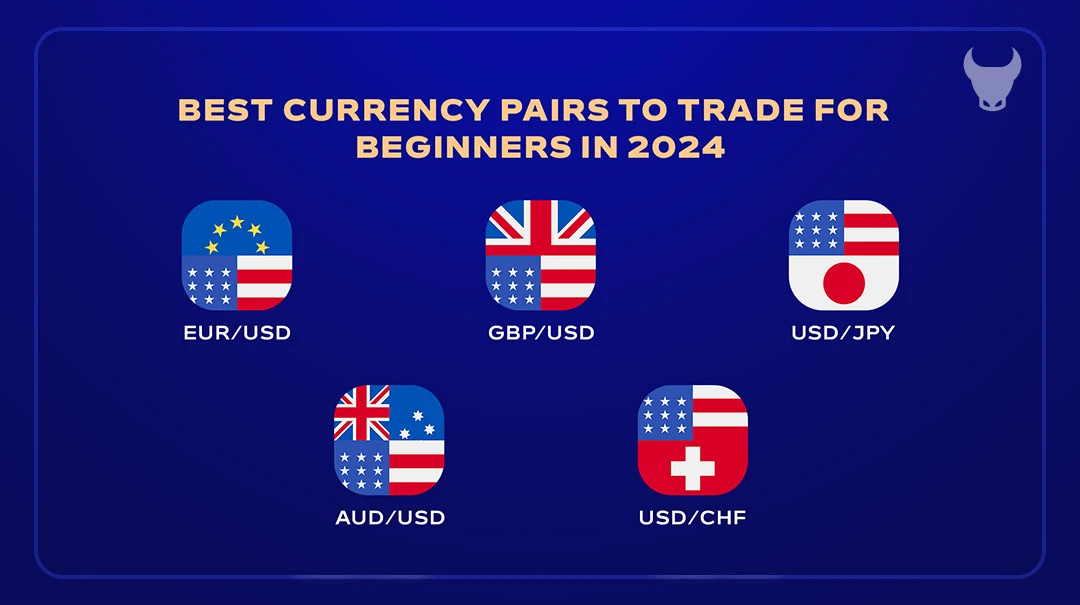

EUR/USD
The EUR/USD pair is the most traded currency pair in the world. It offers high liquidity and low spreads, making it cost-effective for beginners. Additionally, there is a wealth of information available for analysis, which helps new traders make informed decisions.
Trading Tips: The best times to trade EUR/USD are during the overlap of the European and US trading sessions, typically between 8 AM and 12 PM EST. Key economic indicators to watch include the European Central Bank (ECB) interest rate decisions, US Federal Reserve announcements, and major economic reports like GDP and employment data.
GBP/USD
Known as “Cable,” the GBP/USD pair is popular due to its good volatility, providing ample trading opportunities. This pair is favored by traders who seek more dynamic price movements.
Trading Tips: Important economic events to watch include Bank of England (BoE) interest rate decisions, UK GDP reports, and US economic data. Managing volatility is crucial; using stop-loss orders can help mitigate risks associated with sudden price swings.
USD/JPY
The USD/JPY pair is known for its high liquidity and is often less volatile compared to other pairs. It is influenced by the economic activities of the US and Japan, making it a stable choice for beginners.
Trading Tips: Key economic indicators to monitor include US Federal Reserve announcements, Japanese economic data such as GDP and industrial production, and geopolitical events in the Asia-Pacific region. Trading during the overlap of the Tokyo and New York sessions can provide good opportunities.
AUD/USD
The AUD/USD pair is commodity-driven, reflecting the economic ties between Australia and its trading partners. It is good for learning market correlations, especially with commodities like gold and iron ore.
Trading Tips: Pay attention to Australian economic data, including Reserve Bank of Australia (RBA) interest rate decisions and employment reports. Commodity prices, particularly metals and minerals, also play a significant role in this pair’s movements.
USD/CHF
The USD/CHF pair is considered a safe-haven currency due to the stability of the Swiss economy. It is less volatile and provides a stable trading environment.
Trading Tips: Monitoring global risk sentiment is crucial, as the Swiss franc often strengthens during times of economic uncertainty. Key economic indicators include Swiss National Bank (SNB) policy announcements and global economic data that impact risk sentiment.
These currency pairs are recommended for beginners due to their high liquidity, lower spreads, and the wealth of information available for analysis. By focusing on these pairs, new traders can build a strong foundation and develop effective trading strategies.
How to Analyze Currency Pairs?
Analyzing currency pairs is crucial in Forex trading. It involves understanding market dynamics and using analytical techniques to predict future price movements. Here are key methods:
1. Fundamental Analysis: Examine economic, political, and social factors that influence a currency’s value. Stay updated on macroeconomic indicators such as GDP growth rates, interest rates, inflation, and employment data.
2. Technical Analysis: Focus on historical price data and patterns to predict future price movements. Use tools and indicators such as moving averages, trend lines, support and resistance levels, and oscillators.
3. Sentiment Analysis: Examine the overall market sentiment towards a particular currency pair. Use indicators such as the Commitment of Traders (COT) report, which provides insights into positions held by large institutional traders.
4. Correlation Analysis: Study the relationship between different currency pairs. Some pairs have a positive correlation, moving in the same direction, while others have a negative correlation, moving in opposite directions.
5. Intermarket Analysis: Study the relationships between Forex markets and other financial markets, such as commodities, stocks, and bonds.
These analysis methods provide valuable insights into market trends and inform trading decisions. Successful Forex trading involves a combination of different analysis techniques tailored to your trading strategy and risk tolerance.
Tips for Beginner Forex Traders
Starting in Forex trading can be challenging, but with the right approach, you can set yourself up for success. Here are some essential tips for beginners:
1. Educate Yourself
Understanding the Forex market is crucial. Learn how it works, the key terms, and the factors that influence currency prices. There are many online resources, including articles, tutorials, and videos, to help you get started.
2. Create a Trading Plan
A trading plan is your roadmap to success. It should include your trading goals, risk tolerance, and strategies. Stick to your plan and avoid making impulsive decisions based on emotions.
3. Start with a Demo Account
Before risking real money, practice with a demo account. This allows you to get a feel for the market and test your strategies without financial risk. Most brokers offer free demo accounts.
4. Manage Your Risk
Risk management is vital in Forex trading. Never risk more than you can afford to lose on a single trade. Use stop-loss orders to limit potential losses and protect your capital.
5. Keep Emotions in Check
Trading can be emotional, but it’s important to stay calm and rational. Avoid making decisions based on fear or greed. Stick to your trading plan and make decisions based on analysis.
6. Stay Informed
Keep up with the latest news and economic events that can impact the Forex market. Understanding the broader economic context can help you make better trading decisions.
7. Start Small
Begin with small trades to minimize risk. As you gain experience and confidence, you can gradually increase your trading size.
8. Be Patient
Success in Forex trading doesn’t happen overnight. Be patient and give yourself time to learn and grow. Consistent practice and learning from your mistakes will help you improve over time.
9. Choose the Right Broker
Select a reliable broker that suits your trading needs.
By following these tips, beginner traders can build a strong foundation and increase their chances of success in the Forex market.
Conclusion
We’ve explored the best Forex currency pairs for beginners to trade in 2024, including EUR/USD, USD/JPY, and GBP/USD. These pairs offer high liquidity, lower spreads, and ample information for analysis, making them ideal for new traders.
We also discussed the importance of understanding currency pairs, analyzing them effectively, and following essential trading tips to navigate the Forex market confidently.
Starting your Forex trading journey can be both exciting and rewarding. With the right knowledge and tools, you can make informed decisions and build a strong foundation for success.
Ready to take the next step? Open an account with Trendo Broker today and start trading. With Trendo Broker’s support and resources, you’ll be well-equipped to embark on your Forex trading journey.
FAQs
How do we analyze currency pairs in Forex?
What are forex currency pairs?
The best time to trade the EUR/USD forex pair?
Which forex currency pair is most profitable?
What to trade on forex as a beginner?
Which currency pairs are the easiest to trade?
What is the easiest forex currency pair to predict?
Article similaire
Le plus visité
0










